A standard manual hand planer features a static blade coupled with a sturdy body and requires physical effort to work, Hand scrapers function similarly but need to be pulled instead of being pushed when using on larger pieces. Hand planers, electric hand planers, benchtop planers, jointer planers and thickness planer are the most popular types of planers on this list, read on to discover the rest.
![21 Types of Planers and Their Different Uses [with Pictures] Types of Planers](https://homesthetics.net/wp-content/uploads/2023/11/Types-of-Planers.jpeg)
With the high amount of effort, skill, and time woodworking requires it can almost be considered a form of art.
And like many other art forms, it involves the use of various tools and implements, such as drills, saws, chisels, and many more. Planers are among the most important woodworking tools, and different types are available for various woodworking projects.
This guide aims to help you know about the various types of planers available.
1. Basic hand planer
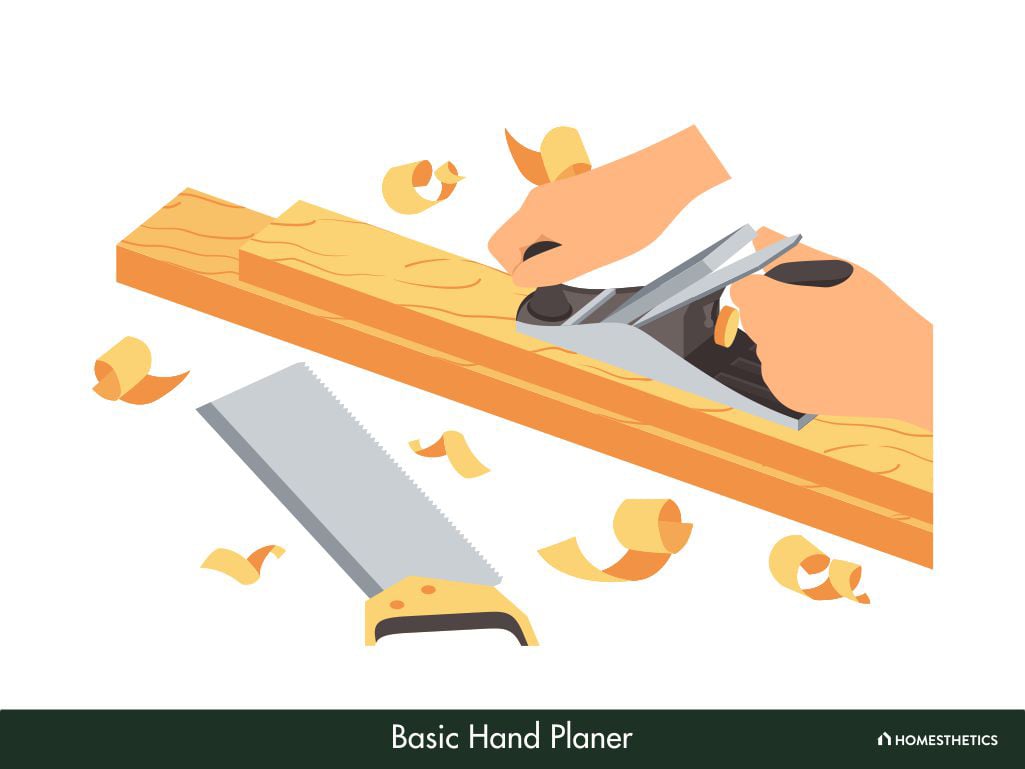
A basic hand planer involves physical effort using the hand to shape the wood as required. The force applied by hand moves the blade of the planer over the wood to give it the desired shape. Hand planers have a sturdy body, a static or non-moving blade, and a short metal strip that ensures consistency while trimming the wood.
The angle on such a planer is always constant to the blade or cutting edge, which helps make the wood smooth after trimming it.
2. Hand scraper
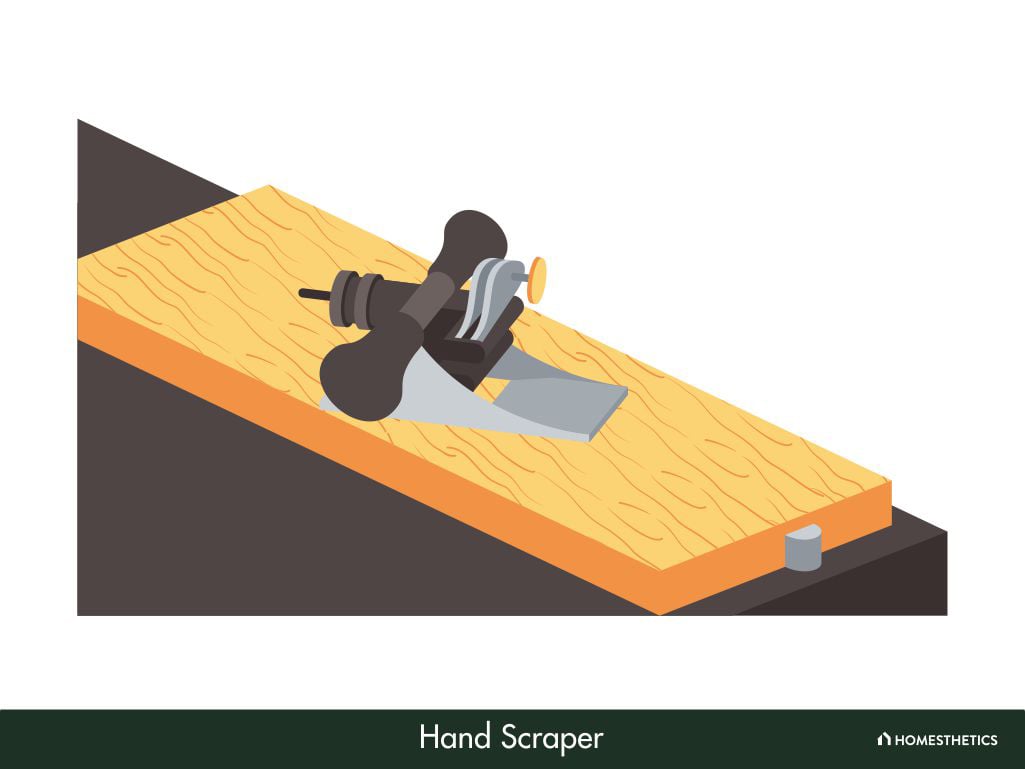
If you’re dealing with coarse-grained wood, a hand scraper might be the best tool to use, as my findings show. The primary difference between this and a basic hand planer is that the former involves a pulling motion for shaping the wood, while the latter involves a pushing motion.
Also, a hand scraper does not make noise and can help you avoid the dust produced when shaping or sanding lumber. The blade can be held at the same angle for long periods without any inconvenience, and you can use this type of wood planer on large pieces effortlessly.
With a hand scraper, it is possible to avoid marks on the wood since the ends can be rounded. It even has screws that can be used to adjust the angle.
3. Two-handed spokeshave
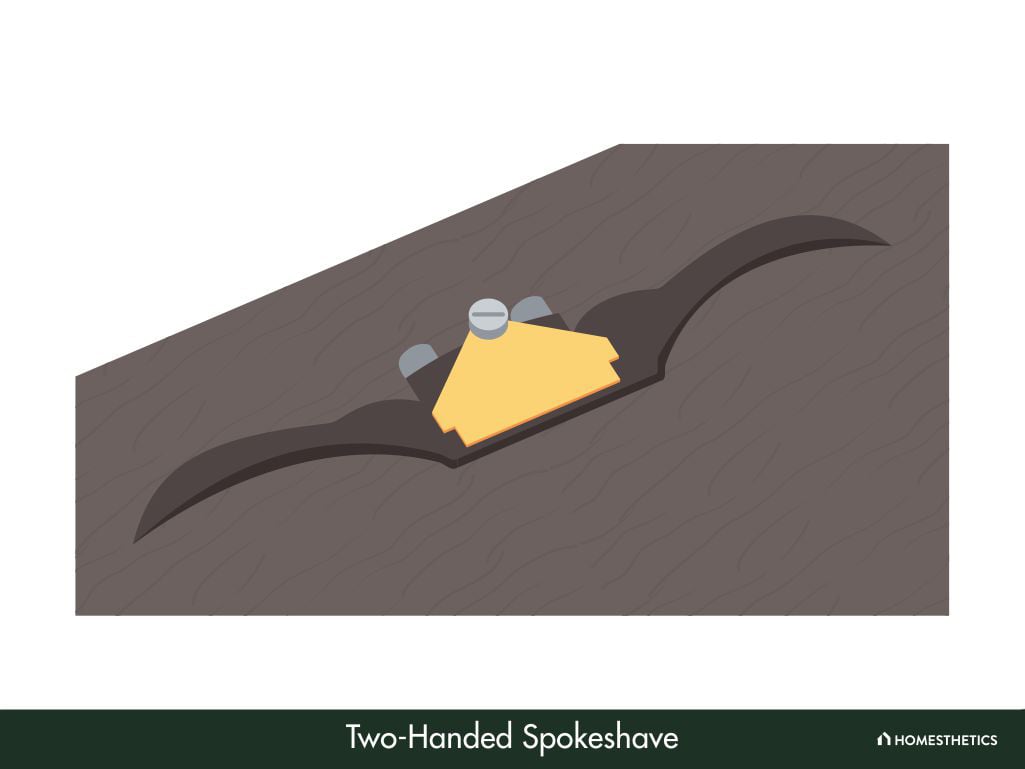
Earlier versions of the two-handed spokeshave were designed like a drawknife, with two wooden handles that had tangs and a metal blade for shaping wood. While the current design of this type of manual planer is quite similar, the blade can be removed for adjustments or sharpening.
Unlike drawknives, a two-handed spokeshave has a sole plate for adjusting the angle of the blade to the wood that needs to be shaped. And depending on how this sole and the blade are designed, you can find this planer in various configurations.
There are convex-set spokeshaves, flat-bottom and round-bottom ones, concave spokeshaves, and combination ones for various purposes. Thus, these types of wood planers are highly versatile and can be used for different projects.
4. Kanna or Japanese planer
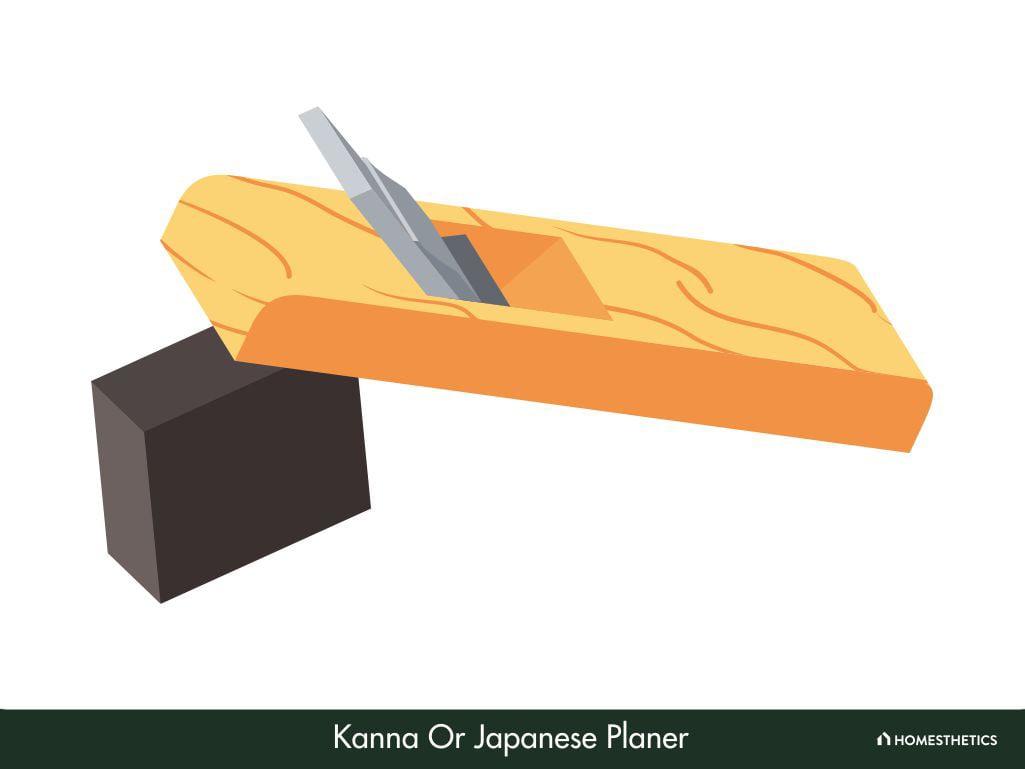
Based on my first-hand experience, I can say that the Japanese planer, also called Kanna, is among the unique wood planers available. It is usually constructed using hardwood, such as Japanese white or red oak trees. The blade is made of strong iron and laminated steel that is highly polished, resulting in a fine finish.
There is a chip breaker made of a single nail and a wedge, both securing the blade in place. Unlike most other manual planers, this one is pulled toward the operator rather than being pushed away.
5. Surform planer

A surform planer, often known as a combination rasp planer, has a fixed handle, and its blade is replaced by a metal sheet with several holes. This makes it easy to identify, as the surform planer looks and functions similar to a cheese grater but with sharp-edged holes for shaving the wood.
These sharp edges on the holes of the metal sheet are responsible for trimming the wood, and you can even find small surform planers for one-handed use. Surform planers offer several advantages, such as being easy to use, leaving behind little dust, and not getting clogged up.
Also, they can be used on curved and flat surfaces, and on soft aluminum or fiberglass, besides wood.
6. Flat planer bottom-edged
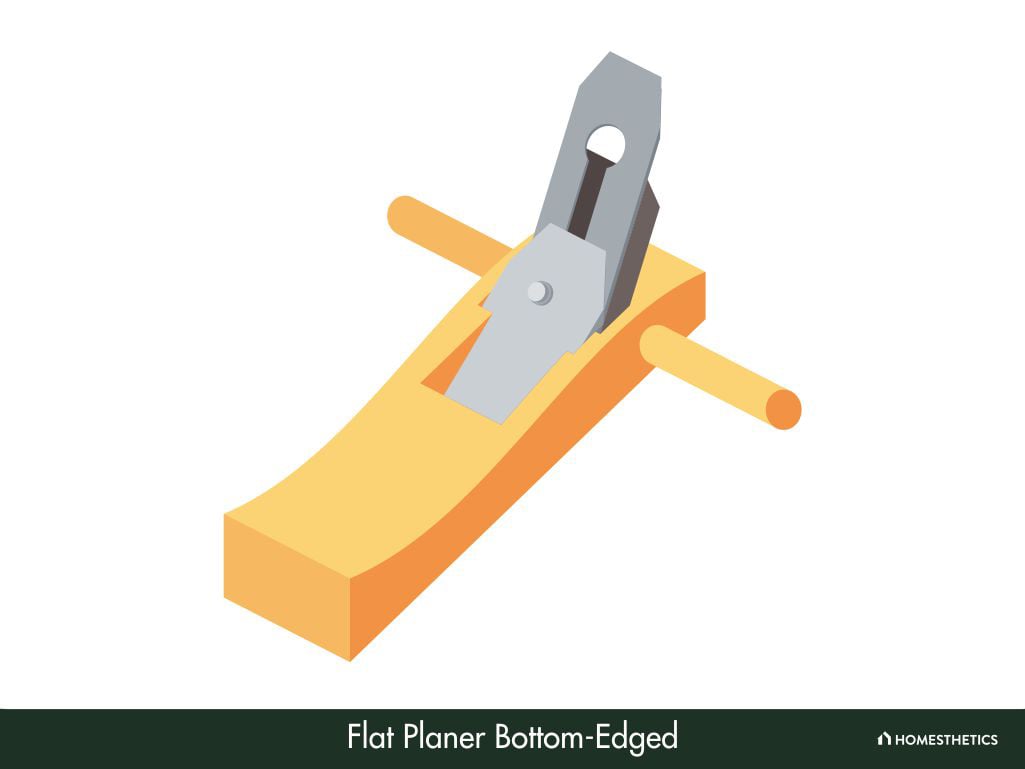
A flat planer is one of the smallest types of wood planers available and is best suited for DIY projects. It comprises a wooden block and a sharp blade, while the center of the block contains rectangular holes that are used for shaving the wood.
You can use the tool for polishing and deburring surfaces, as indicated by my tests, even though a bottom-edged planer has no handles. Due to its small size, it is possible to go under this type of planner to check your progress while using it. But its biggest advantage is that it is available at a very low price and is great for those with a limited budget.
7. Block planer
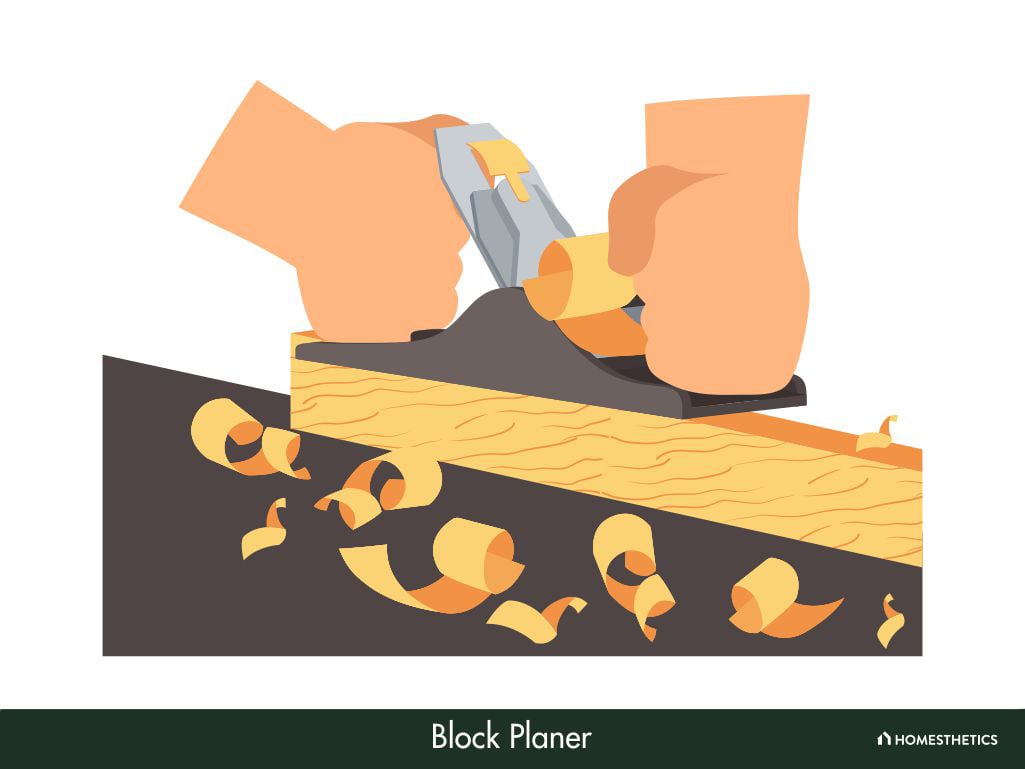
Block planers are quite small and can be as short as 3 inches and go up to 7 inches long. This type of planer differs from others because its blade is attached at a lower angle, making it easy to remove extremely thin wooden shavings.
A block plane is used for angling edges, trimming wood grain, and eliminating glue lines. You can even find standard-angled planers whose blades are attached at an angle of 20 degrees. In contrast, the blade of low-angled block planers is angled at 12 degrees.
8. Jointer planer
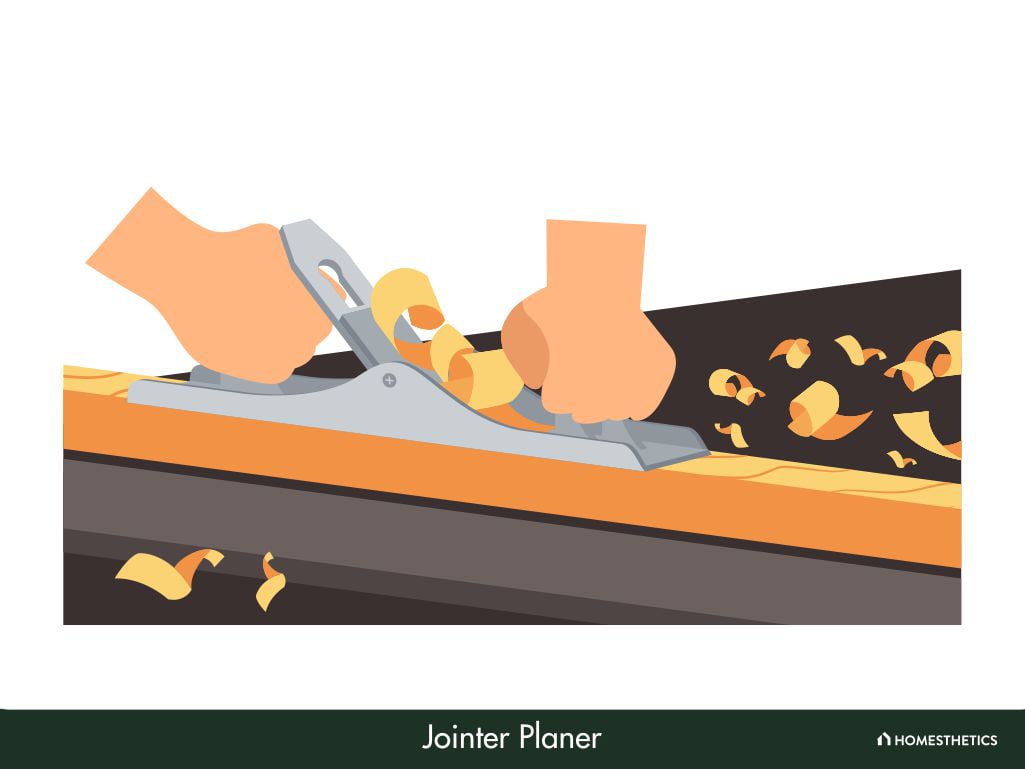
While a block planer is most suitable for intricate woodworking, a jointer planer is ideal when you are working with a large workpiece. It is designed to make it easy to remove a large amount of material from such surfaces quickly. My research indicates that you can use it to straighten rough edges and corners or smoothen and flatten wooden surfaces.
The length of a jointer planer usually ranges from 20 to 24 inches, which makes it much longer than most other options. This planer can move very quickly over uneven wooden surfaces, leveling them out so they become flatter and smoother.
9. Scrub planer
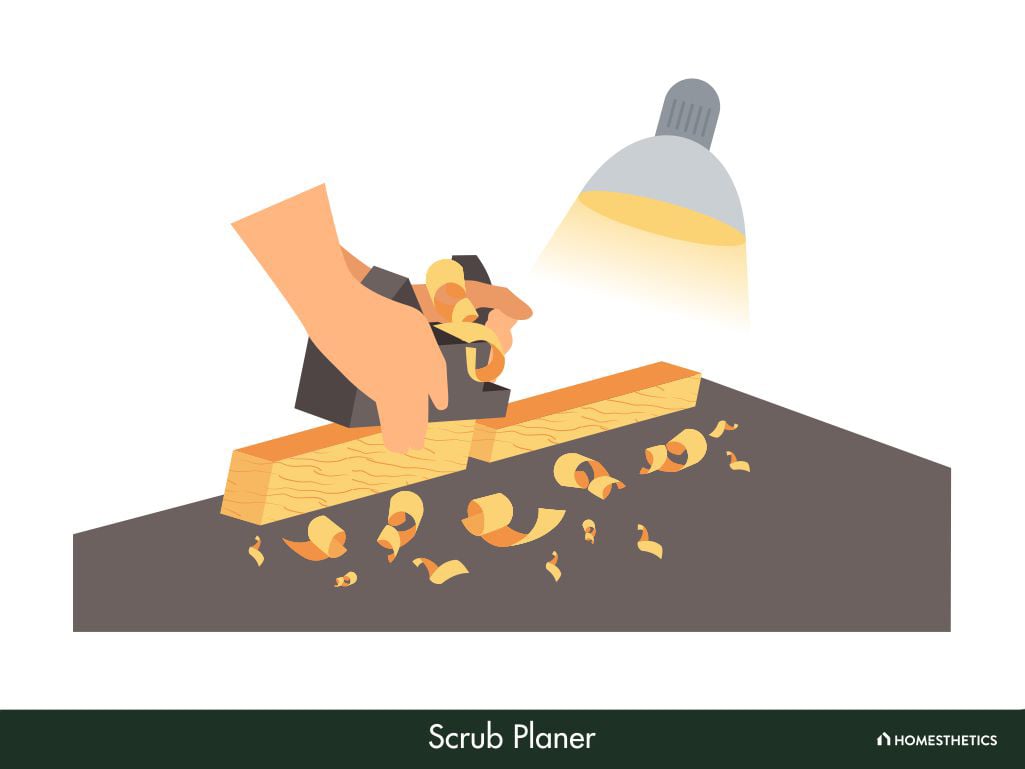
Like a jointer planer, a scrub planer can help you remove a large amount of material from the surface quickly. It is the best option in situations when the thickness of a board needs to be reduced. The sole of a scrub planer is quite small and is coupled with a narrow but thick blade and a deep cutting edge.
This construction makes it the complete opposite of a jointer planer and allows the tool to make gouging, deep cuts. Besides being used for smoothing uneven or curved surfaces, scrub planers can be used to eliminate faults or defects like twists and knots from the surface.
10. Smoothing planer
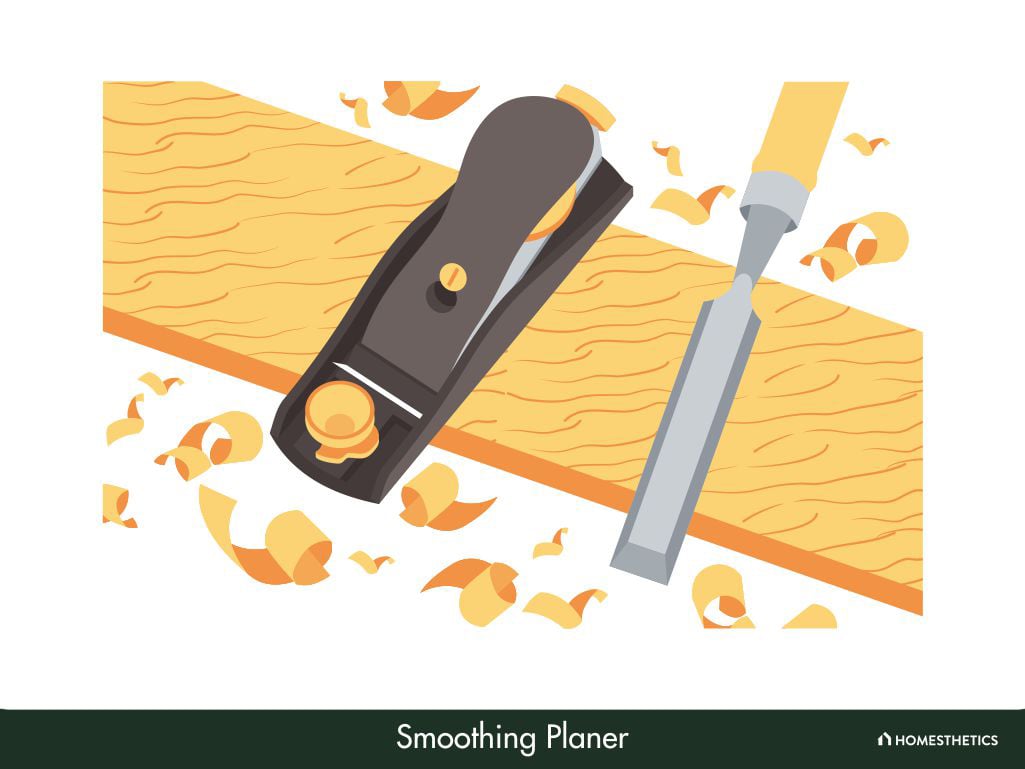
As the name indicates, a smoothing planer is used to smoothen the surface after it has been flattened and brought into the desired shape. It is the smallest of all planers and ranges from 7 to 10 inches long. You can use this type of planer to remove marks from the wooden surface left behind by various machinery during the woodworking process.
A smoothing planer can be used to get rid of shavings that are even less than 0.051 mm in size. And despite its small size, you can hold it in both hands for greater convenience.
11. Jack planer
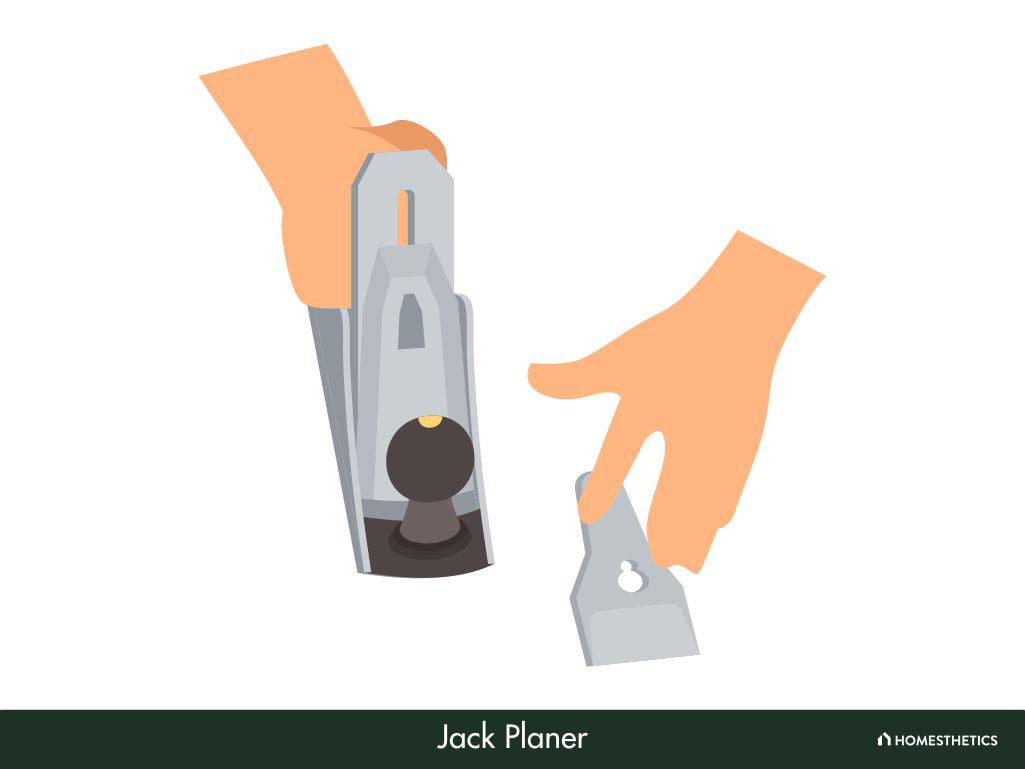
The length of a jack plane can range from 12 to 18 inches, while its width ranges from 2.5 to 3 inches. This makes it smaller than a jointer plane, but it is a versatile tool that can be used for most types of woodworking. A jack planer is usually the first type of planning tool used when a wooden surface requires planning.
Its blades are slightly cambered for removing a larger quantity of material from the surface without leaving any marks. And like a smoothing planer, the blades of a jack planer can be sharpened on a grinding wheel for better performance.
Jack planers are most suitable for truing or edge jointing but are not meant for wood finishing. They should be used diagonal to the grain for leveling purposes before moving in the direction of the grain. You may need a sander or another planer to get a smooth finish after using a jack plane.
12. Chamfer planer
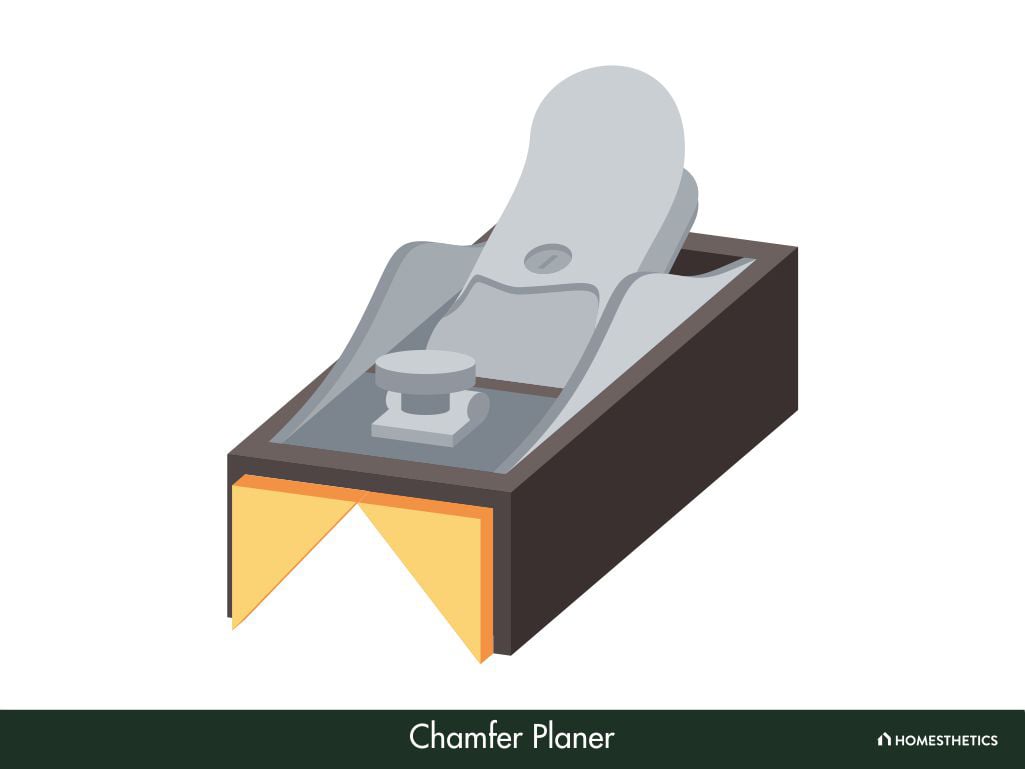
A chamfer planer, better known as a chisel planer, can be used for various tasks for which other types of planers are not suited. This is because it offers the advantages of both a chisel and a planer, such as providing excellent control despite lacking support for the blade.
In a chisel plane, the cutting edge is located at the front, which comes in handy when you need to remove adhesive from the surface and the space is limited. You can even use this type of planer to trim dovetail joints and plugs, shave dowels, and reduce the material from corners.
13. Fore planer
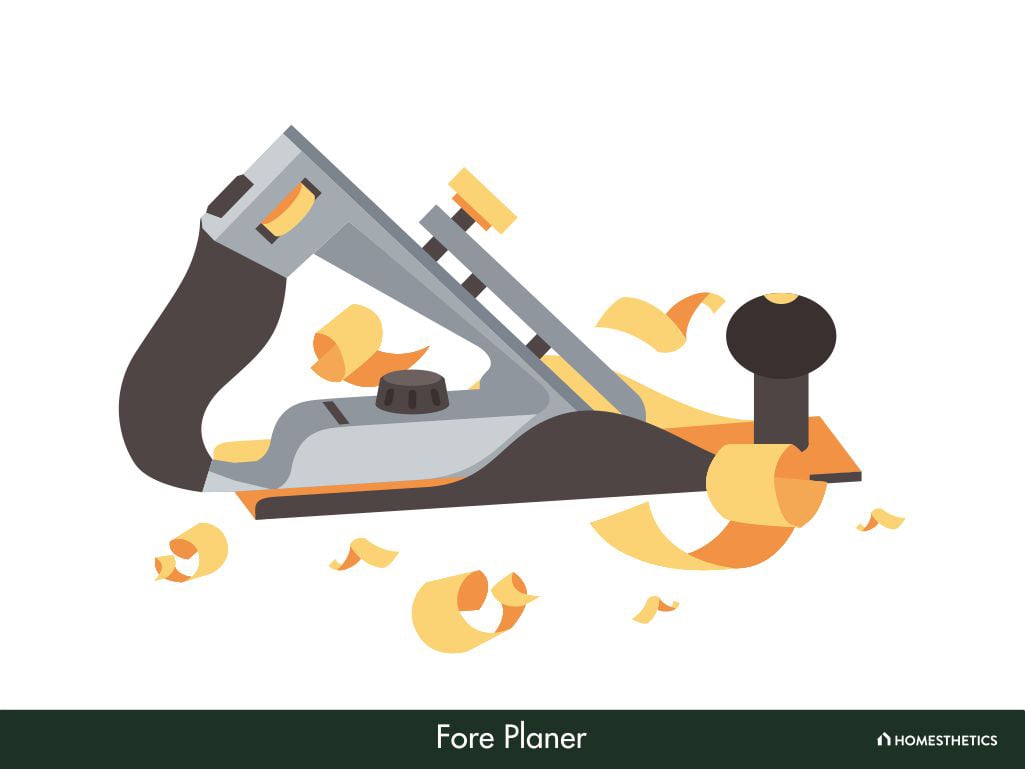
To prepare surfaces for various types of planers, you first need to use a fore plane. A fore plane is often referred to as a roughing plane. It helps flatten the surface, such as that of roughly cut timber and level it properly before other tools, such as a jack plane, can be used.
14. Compass planer
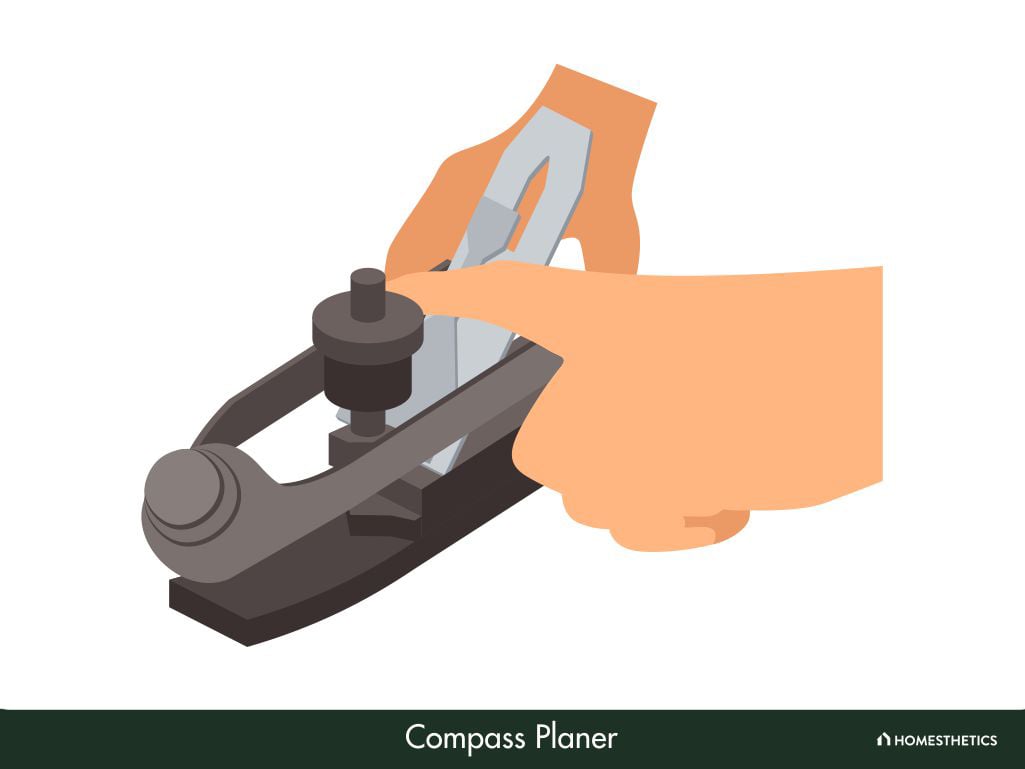
If you need to level curved surfaces and smoothen out concave and convex curves, a compass plane is the most suitable tool. It features a curved design and, in earlier versions, consisted of two separate instruments for working on convex and concave curves.
However, the compass planers available today have a flexible sole that can be easily adjusted, making it easy to use the same tool for different types of curved surfaces.
15. Rabbet planer
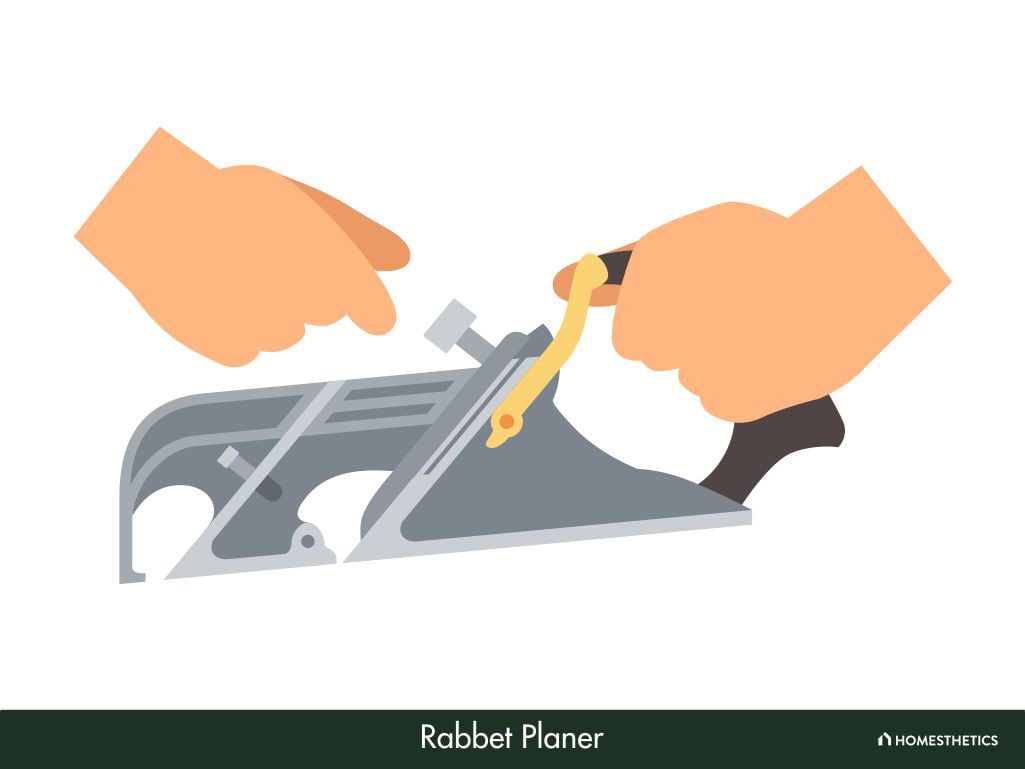
The primary purpose of a rabbet plane is to create a rabbet joint on the surface. This requires cutting grooves shaped like the steps of a staircase into the edge of the surface. Besides being used to cut clean grooves, a rabbet plane can be used to smoothen and refine existing joints.
Also, the blade of a rabbet plane extends beyond the face and the sides of the body, allowing it to reach the wooden surface easily. Sometimes a rabbet planer is called a rebate plane, and rabbets are known as rebates.
16. Router planer

Designed for cleaning up tenon cheeks and shaving dadoes, the router plane has a sturdy but thin blade and can be used when creating mortise and tenon joints. It can help smoothen the surface by blending depressions and removing material from the sides or the bottom.
A router planer is most effective in ensuring that the bottoms of recesses are uniform and can even help smoothen depressed panels.
17. Shoulder planer
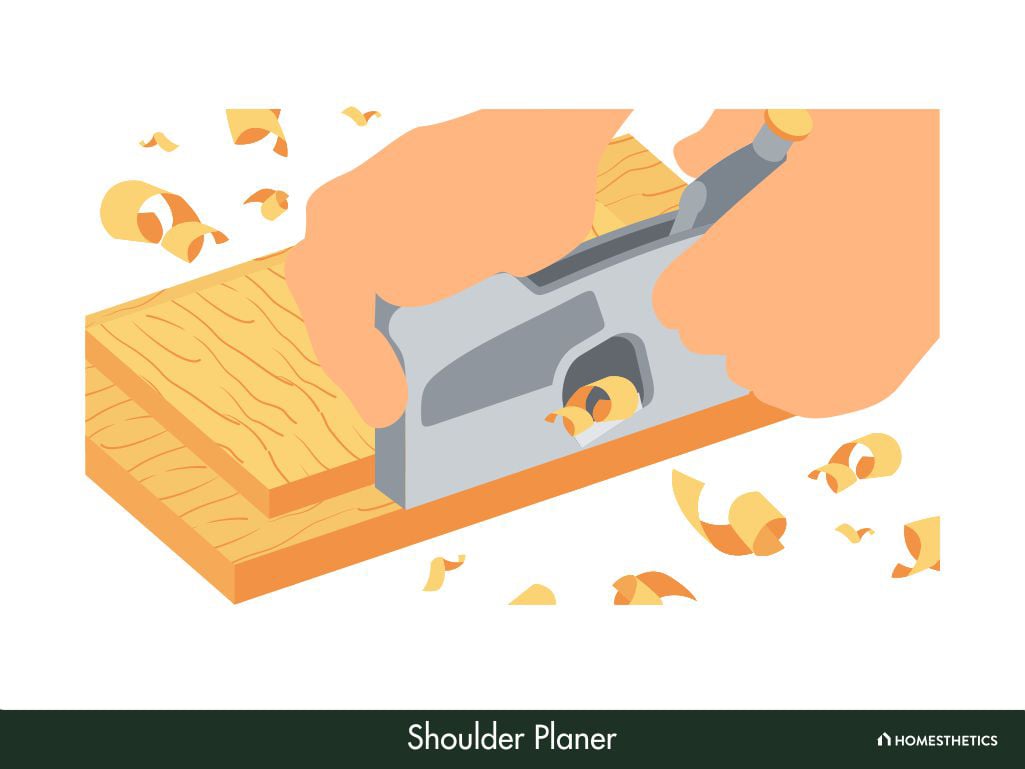
The shoulder plane has a blade angled at 20 degrees and is constructed to make cross-grain planning easier. It can be used for finishing mortise-tenon joints, rabbets, and dadoes by trimming the cheeks and shoulders of such joints.
Another name for the shoulder planer is bullnose planer, and this tool is somewhat similar to a rabbet planer. However, a rabbet plane is designed specifically for cutting rabbets, while a shoulder planer is more versatile, and its cutting angle is much lower.
18. Electric planer
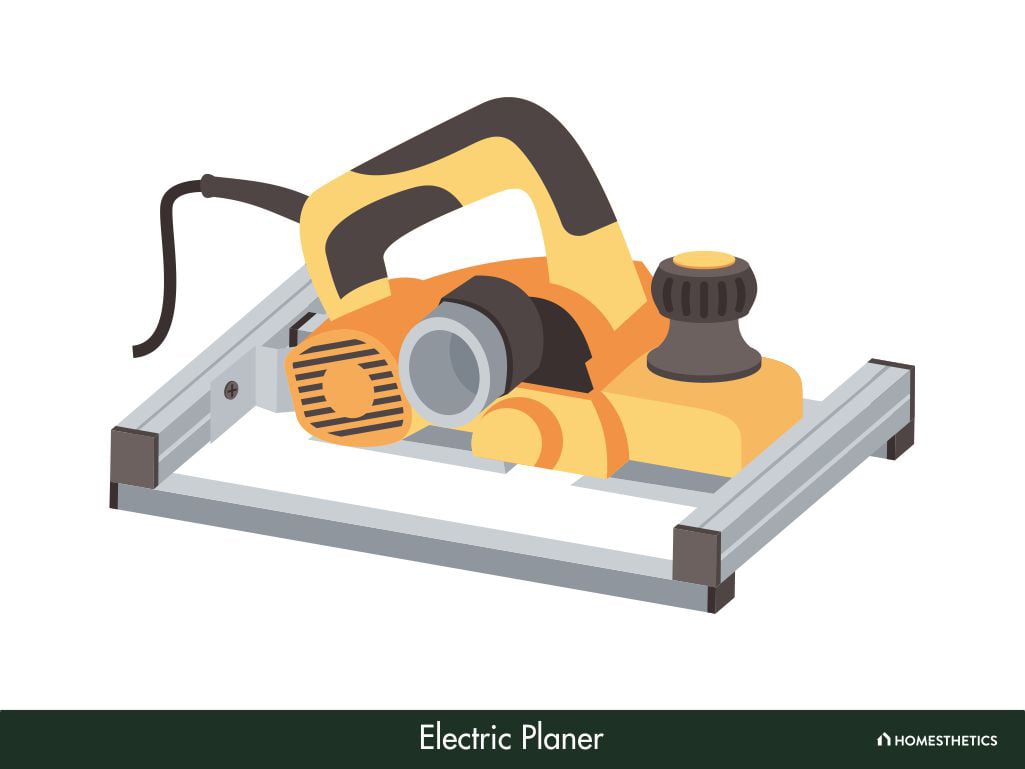
I determined through my tests that the major limitation of manual planers is that they are a bit slow. This means they require considerable effort to ensure mistakes do not occur. That is why many people prefer electric planers since they can cut through the wood quickly without damaging the surface.
One of the key features of an electric planer is its depth adjustment gauge, which allows you to adjust the thickness required when planning a surface. Various types of electric planers are available, and some of the most common ones include benchtop planers, stationary planers, molding planers, and handheld electric planers.
19. Benchtop planer

A benchtop or bench planer is a type of thickness planer, which means it is designed to trim wooden surfaces with uniform thickness throughout. It can have two or three blades, similar to a handheld planer used for fine woodworking since it can remove thin layers from the rough stock.
You can make adjustments to the cutting height when using a bench plane for removing thin shavings as required, and it can also be used to cut small pieces. This type of electric planer is most commonly used for making smooth tabletops since it can help ensure uniform thickness and enhance the appearance of the grain.
20. Stationary planer
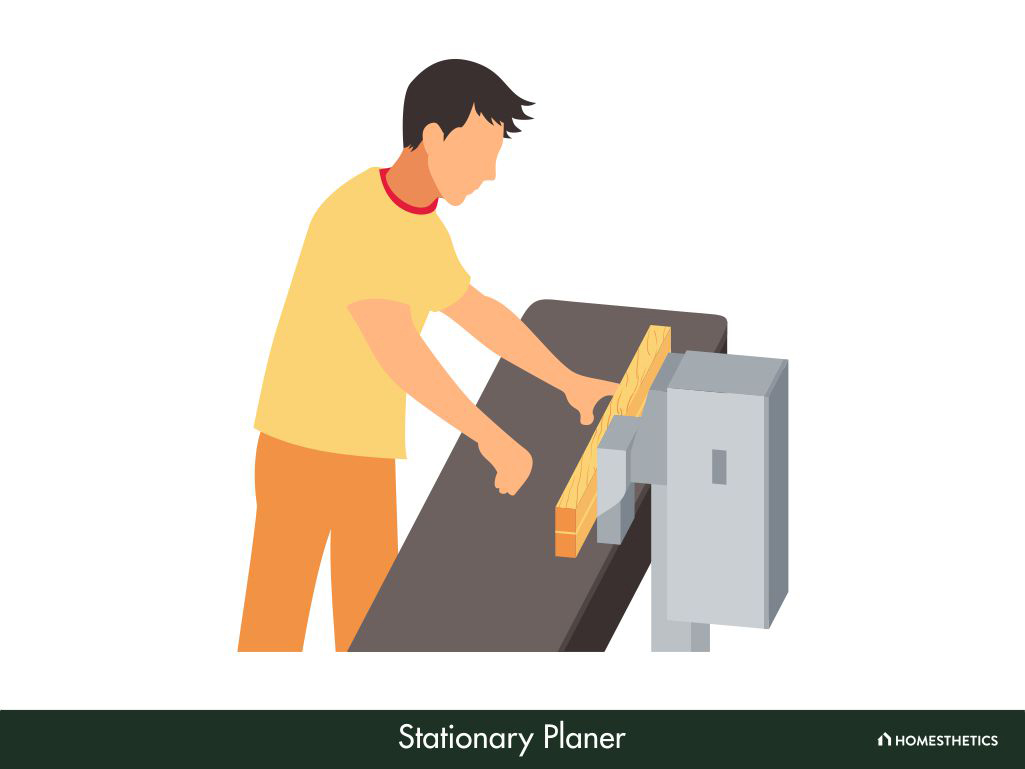
Based on my observations, I can say that a stationary planer is the best tool for large-scale, heavy-duty woodworking projects. These electric planers are designed for highly skilled professionals and are very expensive. They can hold extremely large boards and come with more advanced features than benchtop planers.
The name stationary planer comes from the fact that this type of planer is used as a workstation that remains at one location in the workshop.
21. Molding planer

Molding planers are similar to stationary electric planers since they are designed for large projects and are meant to be used by professionals. They cannot be moved, but they can be used for various types of woodworking projects.
The primary difference between a molding planer and a stationary planer is that the former can also be used as a dimensioner to measure three-dimensional objects. A molding planer can be used for creating frames, baseboards, crown moldings, etc.
What is a handheld electric planer?
A handheld electric planer is a portable woodworking tool that features a high-speed rotating blade for cutting through wood rapidly and smoothly. It is designed with a shaped grip for comfortable handheld use, offering excellent control during the woodworking process. This type of electric planer is highly popular due to its convenience and efficiency.
Are there any advantages of using a manual wood planer?
The advantages of using a manual wood planer include its ability to collect and remove wood dust efficiently using a dust collector. Operating noticeably quieter than their electric counterparts, they are also more cost-friendly. In addition, manual planers are often preferable for beginners due to their simplicity and easy control.
What are the benefits of an electric planer?
The benefits of using an electric planer primarily revolve around its ability to perform tasks with speed and efficiency. Compared to manual planers, electric planers can trim and shave wood much faster, significantly reducing the time spent on the task. They are also capable of handling heavy-duty woodworking tasks, demonstrating their versatility and power.
Which types of woodworking machinery are used for trimming and shaving wood?
Three types of woodworking machines are used for planing wood - open side planer machine, pit planer machine, and double housing planer machine. In the case of an open-side machine, the housing is attached to one side, while a pit planer machine features extensive construction. The double-housing planer machine has a heavy base and vertical housings for carrying the tool heads.
What is an infill planer?
An infill planer has wooden parts and a metal body, and four types of this planer are available. These include a panel planer, smoother planer, miter planer, and shoulder planer. An infill planer has a lot of mass and operates similarly to cast planers but it provides great results when used for smoothing wood grains.
Whether you’re an amateur interested in woodworking techniques or a professional, knowing about the various types of planters can be highly advantageous. This is because different types of projects require specific types of planers that are specially designed to provide the best results.
Using a planer that is not meant for a certain task can damage the wood and lead to unwanted results. That being said, many types of planers are highly versatile and can be used for different projects. But if you’re doubtful about using a particular planer for a certain project, I strongly recommend asking a professional for advice.
